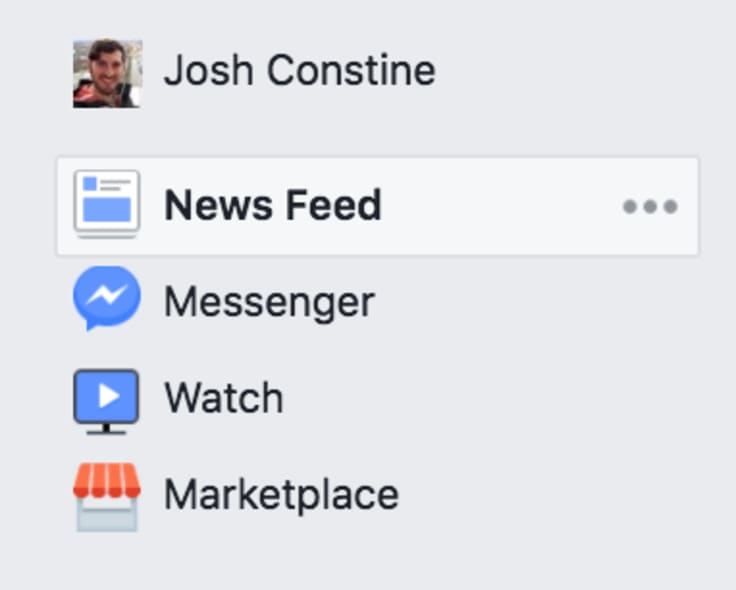Showing top 0 results 0 results found
Showing top 0 results 0 results found

We all see that Facebook is trying to dominate the digital world and is continuously looking for new methods of content monetization.
The latter is specifically visible when we see that the network is continually testing and releasing newer ad formats to see which of them perform better and get easily adopted.
These days all the major social media platforms are increasingly prioritizing video on their properties.
Within this scope, Facebook is trying to optimize its video monetization performance. I bet you've noticed mid-rolls that Facebook introduced some time ago. They pick up mixed opinions, so let's see what they are all about.
What are Facebook mid-roll video adverts
To be precise:
We speak here of these (little annoying) video adverts that launch once you get hooked on content and start actually watching something. They are also called ad breaks because they last around 6 seconds.
Initially, mid-roll ads had been played in 90-second videos after 20 seconds of watching.
Later, Facebook decided that if you want to use mid-rolls, you should be producing videos that are longer than three minutes.
As I've mentioned before, Facebook started testing these ads back in March 2017 with selected publishers.
The whole idea was about monetizing videos and sharing the revenue with brands that supply the platform with this type of content. In practice, publishers receive 55% of the money generated by mid-roll video ads while Facebook keeps 45%.
This split is similar to the revenue sharing model applied by YouTube, and it dominates the online video business.
Are mid-roll ads efficient at all?
Unfortunately, since mid-roll videos have been released, they continually fail to meet expectations and desired results.
According to Digiday, who interviewed several publishers, mid-rolls deliver scant revenue.
Some of the advertisers who got early access in March of 2017 say that the average CPM for its mid-rolls ranges from 15 to 75 cents.
Another admits earning $500 on ad breaks out of 20 million total video views. Although it's just a rough number, as this publisher wasn't able to determine and separate videos with or without ad breaks, the results speak for themselves, and they aren't impressive over here.

Publishers interviewed by Digiday might by anonymous, but we know one thing.
Normally, they generate hundreds of millions of views on the platform monthly, so if they are still unhappy with the CPM, this influences the whole market.
Their insights are quite meaningful because if leaders can't make it, small players probably won't be able to make it either.
Also, a downside of showing mid-rolls in News Feeds is that it can be easy scrolled past, so most people don't get to them at all or switch them off as soon as they see them and jump on to the next thing.
What are the main problems with mid-roll video ads? What's stopping them from taking off?
Twenty second viewing requirement
The primary obstacle is the twenty second viewing requirement before an ad can actually get served.
While most users scroll through their News Feeds quickly, they often skip watching videos and just glance at their titles/ beginnings.
As a result, statistically, only 10% of users make it to the mid-roll ad.
Lack of necessary metrics
Another reason is the lack of necessary metrics that can measure an adverts efficacy.
In spite of having precise information on the revenue generated by ads per day or month, the platform is lacking proper analytics on how many times a mid-roll ad has been played in a video.
Therefore, publishers are forced to count it manually, and that's time-consuming and also can also be error-prone. The lack of appropriate metrics translates to less control for publishers.
This works to the advantage of YouTube video ads, as advertisers prefer to get a clear picture of their video monetization performance.
Finally, to make mid-rolls more user-friendly and easier to digest, Facebook adjusted its algorithm. Now, it'll prioritize the popular - frequently searched and regularly watched - videos produced by publishers as a primary scope of mid-rolls.
The shift will apply both to the News Feed and Watch Hub. Hopefully, it'll boost the viewership and reach of ads.
What's next? Pre-roll video ads
Advertisers who are familiar with Facebook's social media strategy say that Facebook has turned to pre-rolls now.
However, for years Facebook executives have been resisting this idea - simply because users don't like those ads. But now it's actually happening.
Back in the day, there was a time when Mark Zuckerberg even banned pre-roll ads on Facebook. But now, it seems that time has come to give it at least a try. Facebook is already testing six-second pre-roll video ads on the US market.
"YouTube already established that people will sit through and tolerate pre-roll," says Steve Ellis, CEO of WhoSay. With that being said, some social influencers believe that Facebook pursuing the same strategy (as YouTube) can get to this point too.
But don't worry, this doesn't mean your News Feed now will turn into a substantial commercial stream you didn't ask to see.
Fortunately, pre-rolls will just run on Facebook's "Watch" video hub that was launched in August 2017 to its US users, after a limited rollout a month ago.
These ads will play before the video starts.
What's Facebook Watch Hub
The Facebook video has evolved significantly along with the introduction of Watch Hub last year.
The Watch tab has been created to present videos in a feed-free environment and with the intention to make it a direct YouTube rival.
It's a dedicated place for original videos and will curate Facebook-exclusive video content from partners and the company itself as well.
The feature is available on Facebook's native mobile apps, desktop site, and TV apps. The network officially opened the Watch tab on the 5th of January. While it has popped up just for U.S. users at the moment, we can expect it to expand into other markets sooner rather than later.
Where is Watch located on Facebook's dashboard?

- For desktop - Watch will appear in the form of a bookmark under the News Feed and Messenger buttons on the main navigation menu.
- For mobile - you'll find the Watch icon at the bottom of the navigation bar.

Watch features personalized recommendations and categories like:
- "Most Talked About",
- "What's Making People Laugh"
- and "Shows Your Friends Are Watching."
Also, users will have the option to subscribe to their favorite shows instead of randomly stumbling upon one-off videos in their News Feed.
As a result, Watch Hub starts the transition from spontaneous to deliberate watching on the network, and its ultimate goal is creating a market that can surpass traditional TV.
Big things are ahead!
Wrapping up
Taken together, Facebook needs to strike a careful relationship between user experience and revenue generation. This might happen through separation of the News Feed and Watch Hub. Perhaps it's a fair step and a new way to get more attention and dollars.
Is Facebook Watch the new YouTube? Let's wait and see.
And what do you think of Facebook video ads? Do you have any thoughts on Facebook Watch? Let me know in the comments below.
Happy Marketing guys!



